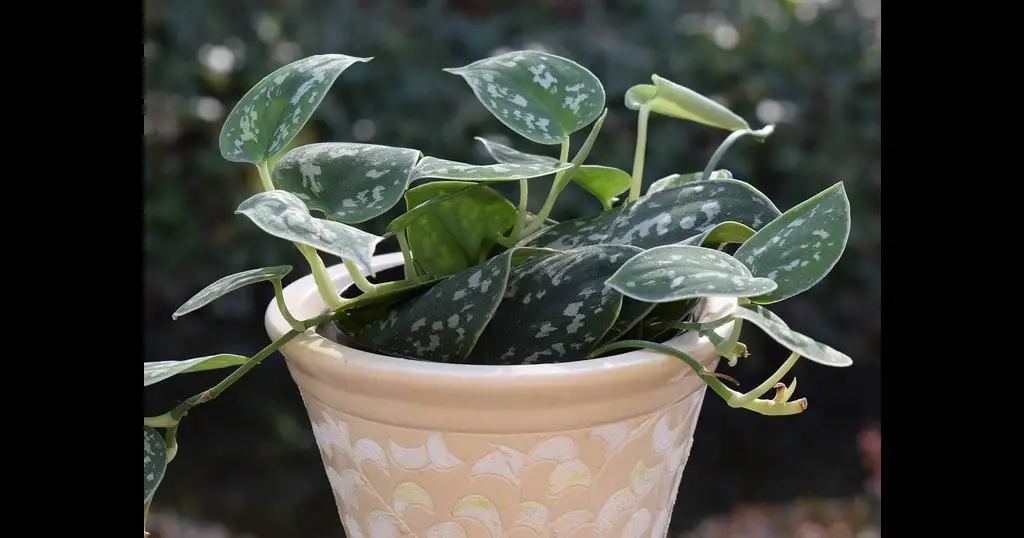There is a common belief that certain plants like to be root bound. So you are wondering: do philodendron like to be root bound! In this article, we gonna answer this question.
And discuss why some growers want their philodendron plants to be root bound. And how you can achieve the same goals without stressing your plant.
But before diving deep into the details lets answer our main question as simple as this: do philodendron like to be root bound? Philodendron plants do not like to be root bound because being in such a situation will send them a signal that there is no way of growth. Therefore, they focus their energy to bloom in order to regenerate rather than balanced growth and blooming,
From some grower perspective, they just want the bright blooms without knowing what actually causing those blooms. Such blooms are caused as a result of the plant trying to save its species by regenerating.
So keeping your philodendron root bound is not a healthy situation at least from the plant perspective.
And choosing to force the bloom or having normal blooms during the blooming season is depends on your growing philosophy. Let see how root bound can affect your plant

How root bound can affect philodendron plant
Soil
When philodendron under the root-bound situation, the roots take the soil space. Therefore, soil diminishes. philodendron needs a reasonable amount of soil in order to hold moisture and nutrients.
So when philodendron is root-bound it will face challenges of lack of moisture and nutrients deficiency.
You may ask: with all those stresses why some growers recommend to let philodendron to be root bound! Besides they want the forced blooms they assume that you will overwater your plant.
So they saving your plant from yourself. It is a fact that the number one reason for losing houseplants is overwatering. And when there are fewer soil particles in the pot the pot will retain way less moisture.
But this is not the right way to approach the problem. The best practice to prevent your plant from root rot caused by overwatering is to use a potting mix with good drainage properties.
Plus using appropriate pot size. I will discuss the pot size later in this article so keep reading.
Rootbound signals to the philodendron that there is no further growth.
Plants and living species are governed by survival rules. The plant does all that it can to survive. It evolves to cope with challenges such as the lake of nutrients and lack of water.
While it develops ways to cope with those challenges it passes those coping mechanisms to it offsprings ( next generation).
And when the plant finds itself unable to survive it focus on regeneration (blooming). Such a thing is very stressful, at least from the plant perspective.
Signs that your philodendron is root bound
Inflated pot or the roots going through the drainage holes
This is the most obvious and easy sign. When you find the sides of your plastic pot or bottom inflated and swelled that means the roots are pushing from inside in order to have more space for growth.
Also if you see some roots coming from the drainage holes it is a sure sign that your philodendron is root-bound.
Signs of dehydration
If the philodendron leaves turning to yellow or starts to lose its colors it can be a sign of a lake of moisture in the roots area.
You may water your plant as you told by the experts but the plant still suffering from dehydration. Because root bound hinders the water retention in the roots zone.
signs of nutrients deficiency
As I mentioned before, the lake of enough soil particles in the pot that contain root ball will hold way fewer nutrients. Such plants may have brown leaves tips or yellow or dropping leaves as a sign of nutrients deficiency.
Stunted growth
As I mentioned earlier, root bounded philodendron will focus on regeneration rather than healthy growth. If your philodendron plant is not growing at the normal rate you may need to check its root to see if it root bounded.
Water drains super fast
This also a clear sign that your philodendron plant is root-bound. When you water your plant the water may drain quickly through the drainage holes.
What to do if your philodendron is root bound
Probably now you know that I don’t recommend keeping your philodendron plant’s roots bounded. we gonna save your plant by repotting it in a new container. Keep reading to know how properly you can do it.
Step 1:
Put your fingers through the plant stem and turn the pot upside down. In order to free the root ball from the pot. Sometimes it is hard to do so because the root-bound is severe.
In such a case using a sterilized knife, cut the soil edges (near the pot’s internal sides). By doing so you will free the root ball from the pot. gently pull the plant from its old pot.
Step 2:
Choose a new pot that a 2 inches wider than the old one. And has a depth that equals 1/3 of the philodendron length.
It is important to not choose a very wide and deep pot because such a pot will retain extra moisture which can lead to root rot.
Step 3:
Fill the pot bottom with well-draining soil in order to put the root ball on it. Then put your plant in the pot. And fill the gaps with a potting mix that has well-draining properties.
Step 4:
After you planted your philodendron in its new pot water it in order to fix the soil and make it well compacted.
How to have great results without bounding philodendron roots
As I mentioned before the goal behind bounding philodendron’s roots is to have more blooms. And saving the plant from overwatering. Let’s achieve those goals without bounding its roots and stress it:
More blooms:
you can have more blooms by simply apply a fertilizer that is rich in phosphorus content before and during the blooming season.
Pick a fertilizer that has a high (P) value when compared with the (N) and (K) values.
Preventing overwatering
In order to prevent root rot that is caused by overwatering choose a pot that is suitable to your plant size ( 2 inches wider than the older one and it has the depth of 1/3 the plant’s length). And use a potting mix that has good drainage qualities.
In conclusion:
In this article, I hope I dispelled the myth that philodendron likes to be root bound. when philodendron is under root bound situation actually it is under stress.
Such a situation signal to the plant that it will die soon. So it responds by focusing its energies on blooming and regenerating.
Such ends may let some growers think root bound is good for their philodendron plants.
You can achieve bright and healthy blooms by fertilizing your plant with phosphorous rich fertilizer before and during the blooming season.
